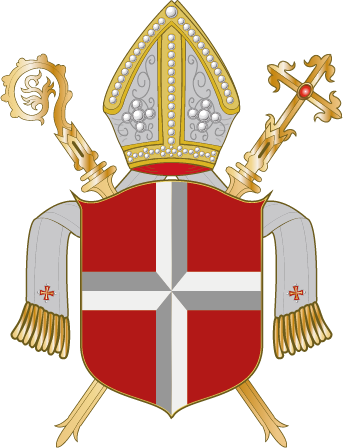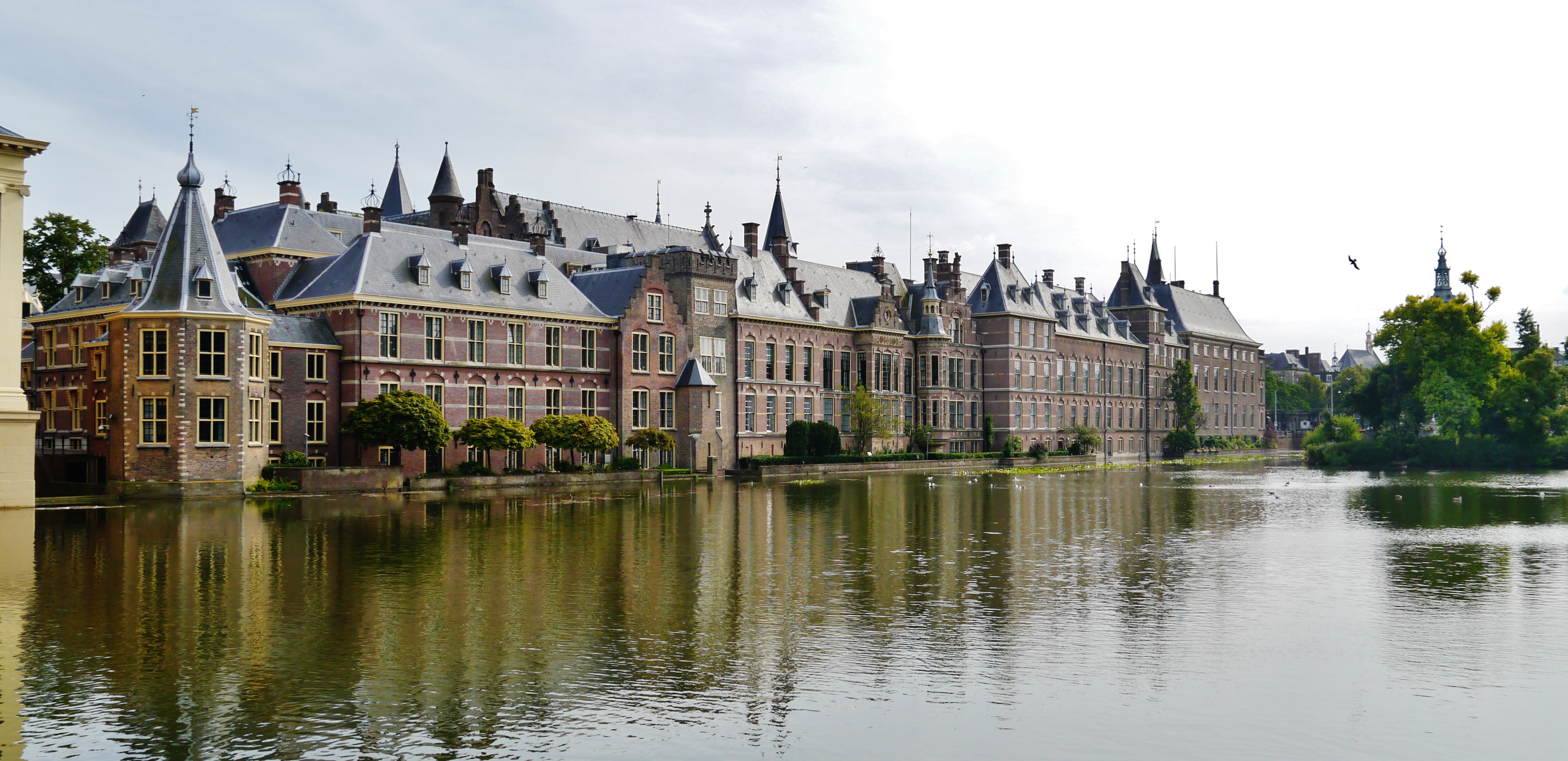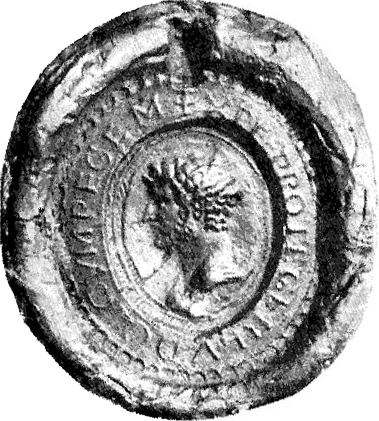|
William II, Count Of Holland
William II (February 1227 – 28 January 1256) was the Count of Holland and Zeeland from 1234 until his death. He was elected anti-king of Germany in 1248 and ruled as sole king from 1254 onwards. Early life William was the eldest son and heir of Count Floris IV of Holland and Matilda of Brabant.M. A. Pollock, Scotland, ''England and France After the Loss of Normandy, 1204-1296'', (The Boydell Press, 2015), xv. When his father was killed at a tournament at Corbie, William was only seven years old. His paternal uncles William and Otto, bishop of Utrecht, were his guardians until 1239. Kingship With the help of his maternal uncle Duke Henry II of Brabant and the Cologne archbishop Konrad von Hochstaden, William was elected king of Germany after Emperor Frederick II was excommunicated by Pope Innocent IV. He succeeded Landgrave Henry Raspe of Thuringia who had died within a year after his election as anti-king in 1246. The next year, William decided to extend his father's hun ... [...More Info...] [...Related Items...] OR: [Wikipedia] [Google] [Baidu] |
King Of Germany
This is a list of monarchs who ruled over East Francia, and the Kingdom of Germany (''Regnum Teutonicum''), from the division of the Frankish Empire in 843 and the collapse of the Holy Roman Empire in 1806 until the collapse of the German Empire in 1918. Note on titles #The Kingdom of Germany started out as the eastern section of the Frankish kingdom, which was split by the Treaty of Verdun in 843. The rulers of the eastern area thus called themselves ''rex'' ''Francorum'' ("king of the Franks"), ''rex Francorum orientalium'' ("king of the East Franks"), and later just ''rex''. A reference to the "Germans", indicating the emergence of a German nation of some sort, did not appear until the eleventh century, when the pope referred to his enemy Henry IV as ''rex teutonicorum'', king of the Germans, in order to brand him as a foreigner. The kings reacted by consistently using the title ''rex Romanorum'', king of the Romans, to emphasize their universal rule even before becoming ... [...More Info...] [...Related Items...] OR: [Wikipedia] [Google] [Baidu] |
Bishop Of Utrecht
List of bishops and archbishops of the diocese and archdioceses of Utrecht. Medieval diocese from 695 to 1580 Founders of the Utrecht diocese * * * * * Bishops * * * * * * * * * * * * * * * * * * * * * * * * * * * * * * * * * * * * * * * * * * * * * * * * * * **'', rival bishop'' **'', rival bishop'' * * * * * * * * Archbishops * * * * Dutch Mission (1592 – 1853) Roman Catholic archdiocese since 1853 Archbishops *Johannes Zwijsen (1853–1868) * Andreas Ignatius Schaepman (1868–1882) * Petrus Matthias Snickers (1883–1895) *Henricus van de Wetering (1895–1929) *Johannes Henricus Gerardus Jansen (1930–1936) *Johannes de Jong (1936–1955) * Bernardus Johannes Alfrink (1955–1975) * Johannes Gerardus Maria Willebrands (1975–1983) *Adrianus Johannes Simonis (1983–2007) *Willem Jacobus Eijk (since 2007) Auxiliary bishops *Goswin Haex van Loenhout, O. Carm. (15 May 1469 - 31 Mar 1475) [...More Info...] [...Related Items...] OR: [Wikipedia] [Google] [Baidu] |
Margaret II Of Flanders
Margaret, often called Margaret of Constantinople (1202 – 10 February 1280), ruled as Countess of Flanders during 1244–1278 and Countess of Hainaut during 1244–1253 and 1257–1280. She was the younger daughter of Baldwin IX, Count of Flanders and Hainaut, and Marie of Champagne.''Female Founders: Exercising authority in Thirteenth-century Flanders and Hainaut'', Erin L. Jordan, ''Church History and Religious Culture''. Vol. 88, No. 4, Secular Women in the Documents for Late Medieval Religious Women (2008), 538-539. Called ''the Black'' (la Noire) due to her scandalous life, the children of both her marriages disputed the inheritance of her counties in the War of the Succession of Flanders and Hainault. Life Childhood Her father left on the Fourth Crusade before she was born, and her mother left two years later, leaving Margaret and her older sister Joan in the guardianship of their uncle Philip of Namur. After her mother died in 1204, and her father the next year, ... [...More Info...] [...Related Items...] OR: [Wikipedia] [Google] [Baidu] |
Otto The Child, Duke Of Brunswick-Lüneburg
Otto is a masculine German given name and a surname. It originates as an Old High German short form (variants ''Audo'', '' Odo'', ''Udo'') of Germanic names beginning in ''aud-'', an element meaning "wealth, prosperity". The name is recorded from the 7th century ( Odo, son of Uro, courtier of Sigebert III). It was the name of three 10th-century German kings, the first of whom was Otto I the Great, the first Holy Roman Emperor, founder of the Ottonian dynasty. The Gothic form of the prefix was ''auda-'' (as in e.g. '' Audaþius''), the Anglo-Saxon form was ''ead-'' (as in e.g. '' Eadmund''), and the Old Norse form was '' auð-''. The given name Otis arose from an English surname, which was in turn derived from ''Ode'', a variant form of ''Odo, Otto''. Due to Otto von Bismarck, the given name ''Otto'' was strongly associated with the German Empire in the later 19th century. It was comparatively frequently given in the United States (presumably in German American families) ... [...More Info...] [...Related Items...] OR: [Wikipedia] [Google] [Baidu] |
House Of Welf
The House of Welf (also Guelf or Guelph) is a European dynasty that has included many German and British monarchs from the 11th to 20th century and Emperor Ivan VI of Russia in the 18th century. The originally Franconian family from the Meuse-Moselle area was closely related to the imperial family of the Carolingians. Origins The (Younger) House of Welf is the older branch of the House of Este, a dynasty whose earliest known members lived in Veneto and Lombardy in the late 9th/early 10th century, sometimes called Welf-Este. The first member was Welf I, Duke of Bavaria, also known as Welf IV. He inherited the property of the Elder House of Welf when his maternal uncle Welf III, Duke of Carinthia and Verona, the last male Welf of the Elder House, died in 1055. Welf IV was the son of Welf III's sister Kunigunde of Altdorf and her husband Albert Azzo II, Margrave of Milan. In 1070, Welf IV became Duke of Bavaria. Welf II, Duke of Bavaria married Countess Matilda of Tusc ... [...More Info...] [...Related Items...] OR: [Wikipedia] [Google] [Baidu] |
Siege Of Aachen (1248)
The siege of Aachen, which lasted from late April or early May until October 1248, was part of the German civil war that began with Pope Gregory IX's proclamation of a crusade against the Emperor Frederick II in 1240. The city of Aachen, which was the traditional coronation site of German kings, supported Frederick II and refused to allow his rival, Count William II of Holland, to enter the city to be crowned. William and his supports besieged the city, forcing it to allow him in, where he was crowned German king. The main primary sources for the siege are the '' Royal Chronicle of Cologne'', the '' Chronicle of the Monastery of Bloemhof'' and Matthew of Paris's ''History of the English''. Background The crusade launched in 1240 was the second against Frederick II, a declared enemy of the church. The first crusade, also called the War of the Keys, lasted from 1228 until 1230, when Frederick and the papacy were reconciled and he was re-admitted to communion. In 1239, he was excom ... [...More Info...] [...Related Items...] OR: [Wikipedia] [Google] [Baidu] |
The Hague
The Hague ( ; nl, Den Haag or ) is a city and municipality of the Netherlands, situated on the west coast facing the North Sea. The Hague is the country's administrative centre and its seat of government, and while the official capital of the Netherlands is Amsterdam, The Hague has been described as the country's de facto capital. The Hague is also the capital of the province of South Holland, and the city hosts both the International Court of Justice and the International Criminal Court. With a population of over half a million, it is the third-largest city in the Netherlands, after Amsterdam and Rotterdam. The Hague is the core municipality of the Greater The Hague urban area, which comprises the city itself and its suburban municipalities, containing over 800,000 people, making it the third-largest urban area in the Netherlands, again after the urban areas of Amsterdam and Rotterdam. The Rotterdam–The Hague metropolitan area, with a population of approximately ... [...More Info...] [...Related Items...] OR: [Wikipedia] [Google] [Baidu] |
Binnenhof
The Binnenhof (; en, Inner Court) is a complex of buildings in the city centre of The Hague, Netherlands, next to the Hofvijver lake. It houses the meeting place of both houses of the States General of the Netherlands, as well as the Ministry of General Affairs and the office of the Prime Minister of the Netherlands. Built primarily in the 13th century, the Gothic castle originally functioned as residence of the counts of Holland and became the political centre of the Dutch Republic in 1584. It is counted among the Top 100 Dutch heritage sites. The Binnenhof is among the oldest Parliament buildings in the world still in use. History Little is known about the origin of the Binnenhof. Presumably, the grounds next to the Hofvijver lake, and the small homestead on it, were purchased by Count Floris IV of Holland from Meiland van Wassenaar in November 1229. Between 1230 and 1234 he had the homestead expanded to a small keep. After Floris' son and successor William II was c ... [...More Info...] [...Related Items...] OR: [Wikipedia] [Google] [Baidu] |
Henry Raspe
Henry Raspe (; – 16 February 1247) was the Landgrave of Thuringia from 1231 until 1239 and again from 1241 until his death. In 1246, with the support of the Papacy, he was elected King of Germany in opposition to Conrad IV, but his contested reign lasted a mere nine months. Biography In 1226, Henry's brother Louis IV, Landgrave of Thuringia, died en route to the Sixth Crusade, and Henry became regent for his under-age nephew Hermann II, Landgrave of Thuringia. He managed to expel his nephew and the boy's young mother, St. Elisabeth of Hungary, from the line of succession and ca. 1231 formally succeeded his brother as landgrave. In 1242 Henry, together with King Wenceslaus I of Bohemia, was selected by Emperor Frederick II to be administrator of Germany for Frederick's under-age son Conrad. After the papal ban on Frederick imposed by Pope Innocent IV in 1245, Raspe changed sides, and on 22 May 1246 he was elected anti-king in opposition to Conrad. The strong papal pro ... [...More Info...] [...Related Items...] OR: [Wikipedia] [Google] [Baidu] |
Pope Innocent IV
Pope Innocent IV ( la, Innocentius IV; – 7 December 1254), born Sinibaldo Fieschi, was head of the Catholic Church and ruler of the Papal States from 25 June 1243 to his death in 1254. Fieschi was born in Genoa and studied at the universities of Parma and Bologna. He was considered in his own day and by posterity as a fine canonist. On the strength of this reputation, he was called to the Roman Curia by Pope Honorius III. Pope Gregory IX made him a cardinal and appointed him governor of the March of Ancona in 1235. Fieschi was elected pope in 1243 and took the name Innocent IV. As pope, he inherited an ongoing dispute over lands seized by the Holy Roman Emperor, and the following year he traveled to France to escape imperial plots against him in Rome. He returned to Rome after the death in 1250 of the Emperor Frederick II. Early life Born in Genoa (although some sources say Manarola) in an unknown year, Sinibaldo was the son of Beatrice Grillo and Ugo Fieschi, Count of Lavag ... [...More Info...] [...Related Items...] OR: [Wikipedia] [Google] [Baidu] |
Emperor Frederick II
Frederick II (German: ''Friedrich''; Italian: ''Federico''; Latin: ''Federicus''; 26 December 1194 – 13 December 1250) was King of Sicily from 1198, King of Germany from 1212, King of Italy and Holy Roman Emperor from 1220 and King of Jerusalem from 1225. He was the son of emperor Henry VI of the Hohenstaufen dynasty and Queen Constance of Sicily of the Hauteville dynasty. His political and cultural ambitions were enormous as he ruled a vast area, beginning with Sicily and stretching through Italy all the way north to Germany. As the Crusades progressed, he acquired control of Jerusalem and styled himself its king. However, the Papacy became his enemy, and it eventually prevailed. Viewing himself as a direct successor to the Roman emperors of antiquity, he was Emperor of the Romans from his papal coronation in 1220 until his death; he was also a claimant to the title of King of the Romans from 1212 and unopposed holder of that monarchy from 1215. As such, he was Kin ... [...More Info...] [...Related Items...] OR: [Wikipedia] [Google] [Baidu] |
King Of Germany
This is a list of monarchs who ruled over East Francia, and the Kingdom of Germany (''Regnum Teutonicum''), from the division of the Frankish Empire in 843 and the collapse of the Holy Roman Empire in 1806 until the collapse of the German Empire in 1918. Note on titles #The Kingdom of Germany started out as the eastern section of the Frankish kingdom, which was split by the Treaty of Verdun in 843. The rulers of the eastern area thus called themselves ''rex'' ''Francorum'' ("king of the Franks"), ''rex Francorum orientalium'' ("king of the East Franks"), and later just ''rex''. A reference to the "Germans", indicating the emergence of a German nation of some sort, did not appear until the eleventh century, when the pope referred to his enemy Henry IV as ''rex teutonicorum'', king of the Germans, in order to brand him as a foreigner. The kings reacted by consistently using the title ''rex Romanorum'', king of the Romans, to emphasize their universal rule even before becoming ... [...More Info...] [...Related Items...] OR: [Wikipedia] [Google] [Baidu] |






